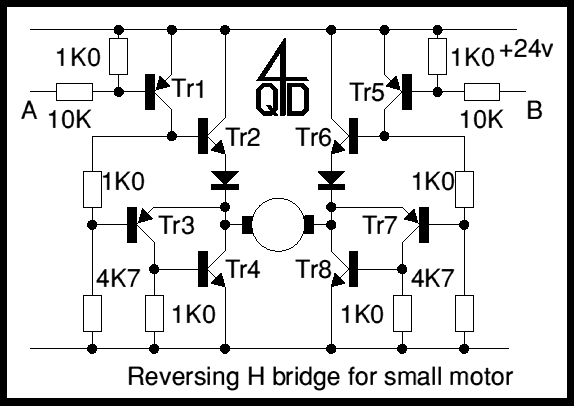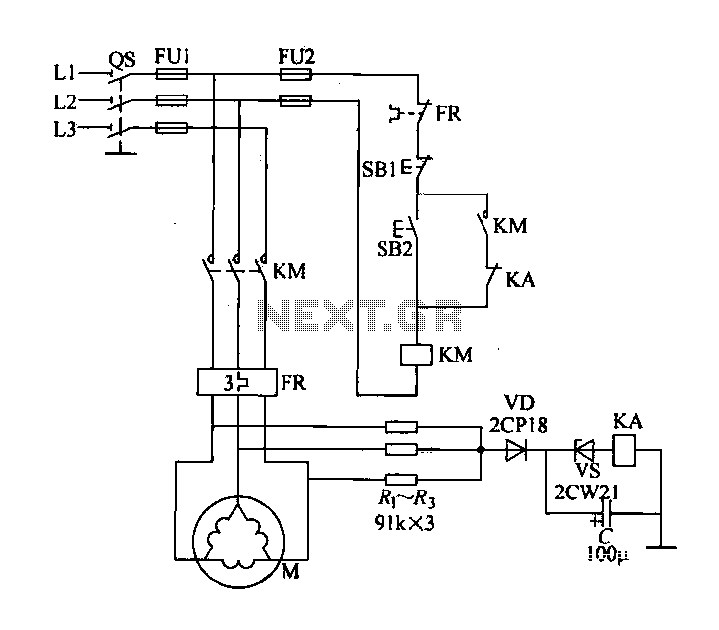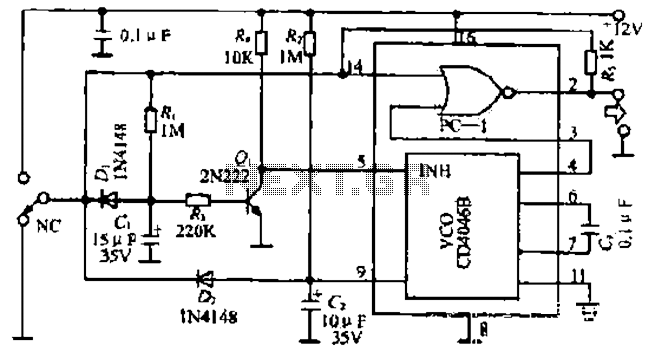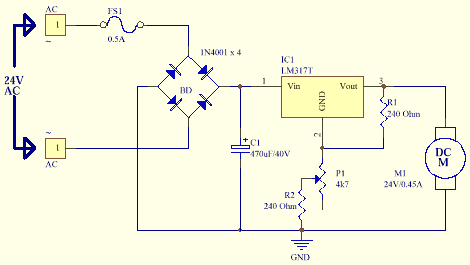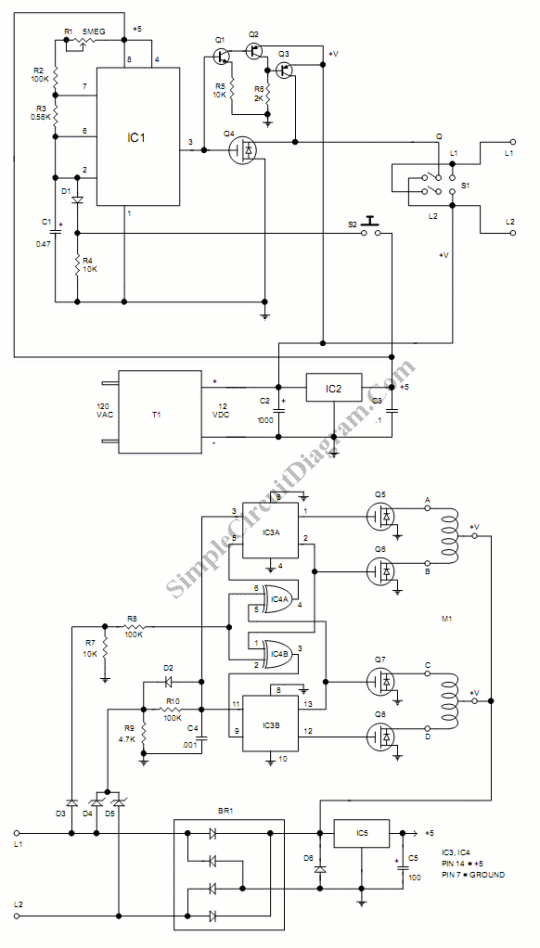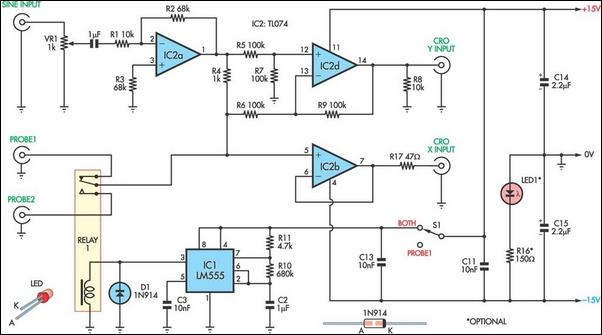
to verify schematics for 2 motor robot
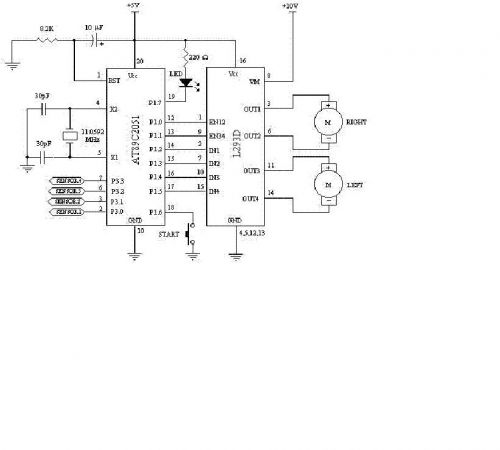
Constructing a robot, or rather a vehicle, that uses two motors. Reference materials regarding the schematics for the circuit design have been obtained, but the current schematics utilize smaller motors that draw less power and operate with a lower power supply. The objective is to incorporate more powerful motors and provide additional power to the circuit. Assistance is requested on how to modify the circuit. Additionally, there is an inquiry about the feasibility of building a Segway using the same circuit, as it also employs two motors. If it is possible, guidance is sought on how to integrate a gyroscope and a Kalman filter to enable self-balancing for the robot.
To modify the circuit for the use of more powerful motors, several steps must be taken. First, it is essential to select motors that match the desired specifications in terms of voltage and current ratings. The power supply must be upgraded to accommodate the increased power requirements of the new motors. This may involve using a higher voltage battery or a more robust power supply unit that can deliver the necessary current without causing voltage drops.
Next, the motor driver circuitry must be evaluated. The existing motor driver may not support the higher current ratings of the new motors. It may be necessary to replace it with a motor driver that can handle the increased load. For example, an H-bridge driver capable of managing the peak current of the new motors should be chosen. Proper heat dissipation mechanisms, such as heat sinks or active cooling, may also be required to prevent overheating during operation.
Regarding the construction of a Segway prototype using the same circuit, it is indeed feasible, as both applications utilize two motors for propulsion. However, additional components will need to be integrated to achieve self-balancing functionality. A gyroscope and accelerometer combination is typically employed for this purpose. The gyroscope provides angular velocity data, while the accelerometer measures linear acceleration. Together, they can give a comprehensive understanding of the vehicle's orientation and motion.
To implement self-balancing, a Kalman filter can be utilized to process the sensor data. The Kalman filter will help in estimating the state of the system, filtering out noise, and providing a more accurate representation of the vehicle's tilt angle. The output from the Kalman filter can then be used to adjust the motor speeds dynamically, ensuring that the vehicle maintains its balance.
In summary, modifying the circuit for more powerful motors involves upgrading the power supply and motor driver, while building a Segway prototype requires the integration of sensors and a Kalman filter for self-balancing capabilities. Proper design considerations must be taken into account to ensure that the system operates effectively and safely.Constructing a robot or should i say a vehicle dat uses 2 motors. I managed to get sum referance regarding d schematics for the circuit design but the current schematics uses a smaller motor. which draws less power and uses a much less power supply. the schematics is in the link below. i need to use a much powerful motor and provide more power to the circuit. cn anyone provide some explanation on howto modify the circuit. thankz a lot! jz another question. cn i build a segway using the same circuit. im planning 2 do a segway prototype. since this circuit also uses 2 motors. izit d same n if it is the sam. how do i add a gyro and a kaplan filter in it. in provide self-balance for the robot. 🔗 External reference
To modify the circuit for the use of more powerful motors, several steps must be taken. First, it is essential to select motors that match the desired specifications in terms of voltage and current ratings. The power supply must be upgraded to accommodate the increased power requirements of the new motors. This may involve using a higher voltage battery or a more robust power supply unit that can deliver the necessary current without causing voltage drops.
Next, the motor driver circuitry must be evaluated. The existing motor driver may not support the higher current ratings of the new motors. It may be necessary to replace it with a motor driver that can handle the increased load. For example, an H-bridge driver capable of managing the peak current of the new motors should be chosen. Proper heat dissipation mechanisms, such as heat sinks or active cooling, may also be required to prevent overheating during operation.
Regarding the construction of a Segway prototype using the same circuit, it is indeed feasible, as both applications utilize two motors for propulsion. However, additional components will need to be integrated to achieve self-balancing functionality. A gyroscope and accelerometer combination is typically employed for this purpose. The gyroscope provides angular velocity data, while the accelerometer measures linear acceleration. Together, they can give a comprehensive understanding of the vehicle's orientation and motion.
To implement self-balancing, a Kalman filter can be utilized to process the sensor data. The Kalman filter will help in estimating the state of the system, filtering out noise, and providing a more accurate representation of the vehicle's tilt angle. The output from the Kalman filter can then be used to adjust the motor speeds dynamically, ensuring that the vehicle maintains its balance.
In summary, modifying the circuit for more powerful motors involves upgrading the power supply and motor driver, while building a Segway prototype requires the integration of sensors and a Kalman filter for self-balancing capabilities. Proper design considerations must be taken into account to ensure that the system operates effectively and safely.Constructing a robot or should i say a vehicle dat uses 2 motors. I managed to get sum referance regarding d schematics for the circuit design but the current schematics uses a smaller motor. which draws less power and uses a much less power supply. the schematics is in the link below. i need to use a much powerful motor and provide more power to the circuit. cn anyone provide some explanation on howto modify the circuit. thankz a lot! jz another question. cn i build a segway using the same circuit. im planning 2 do a segway prototype. since this circuit also uses 2 motors. izit d same n if it is the sam. how do i add a gyro and a kaplan filter in it. in provide self-balance for the robot. 🔗 External reference
